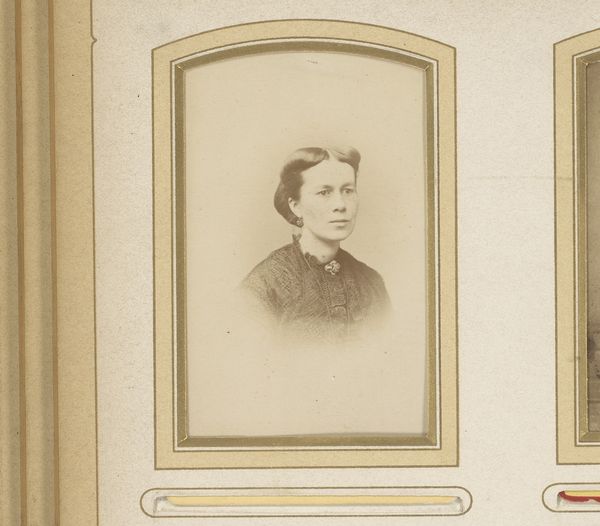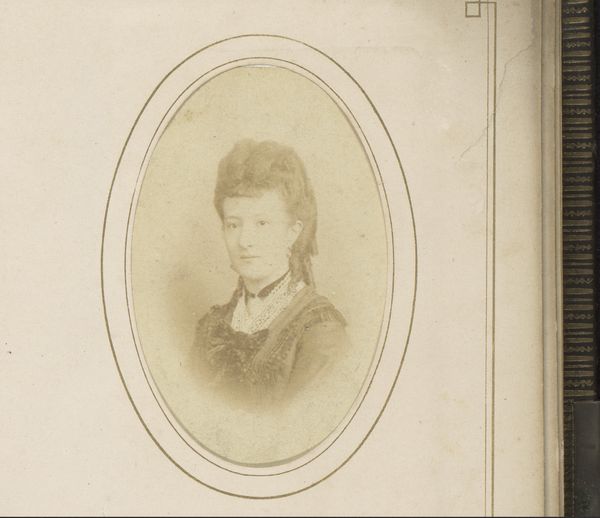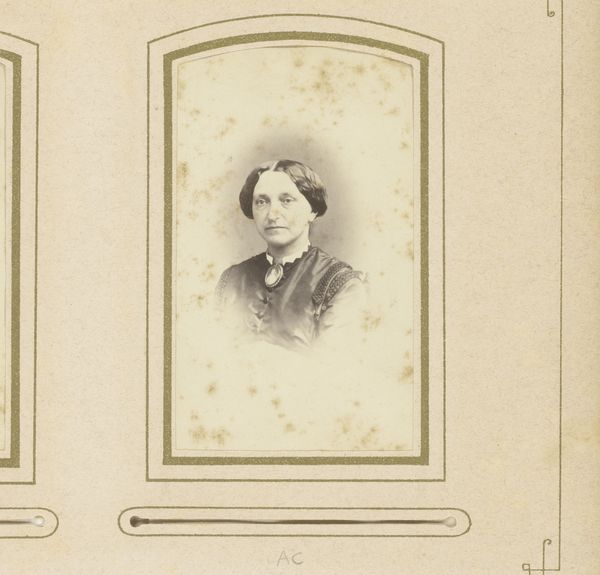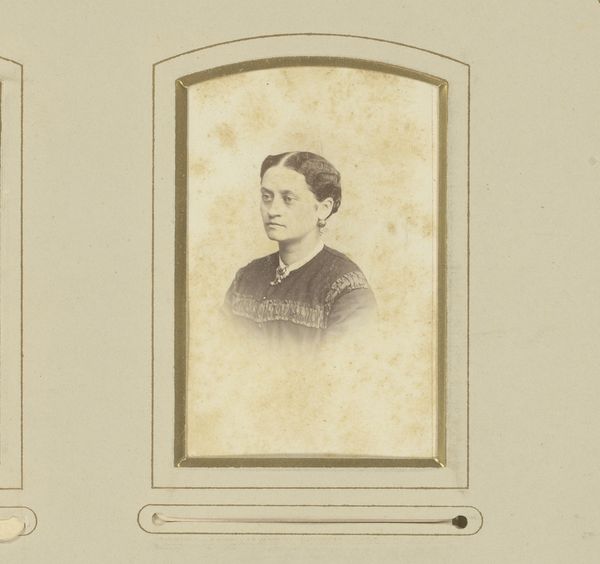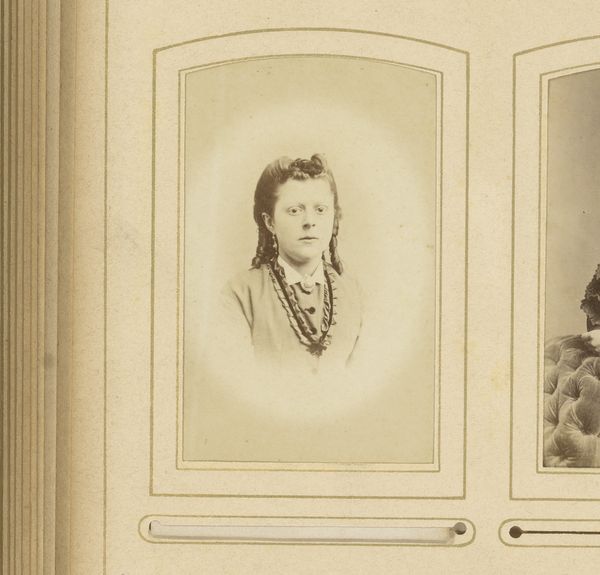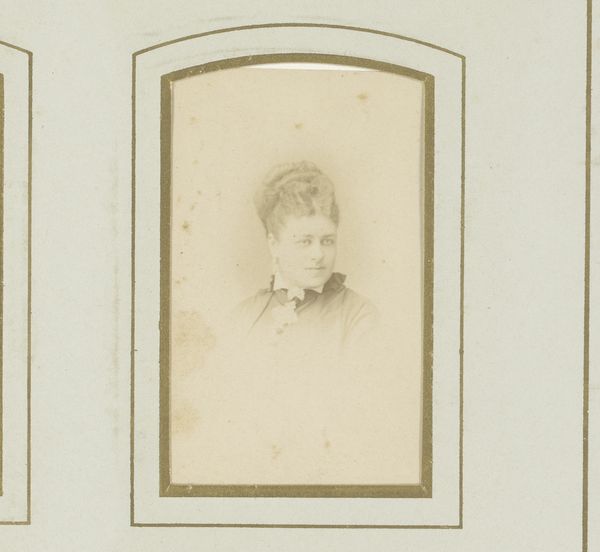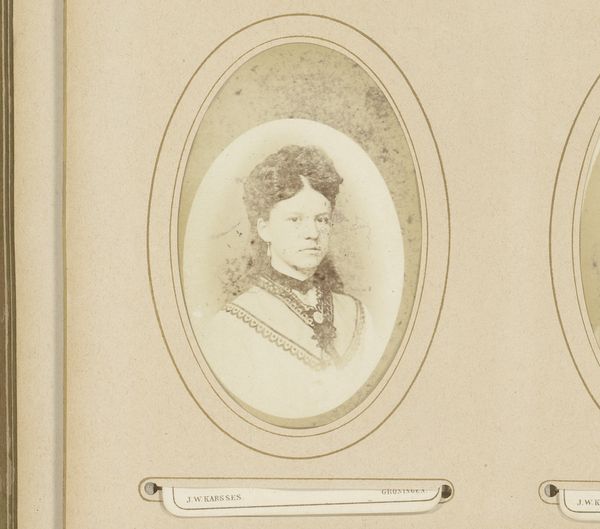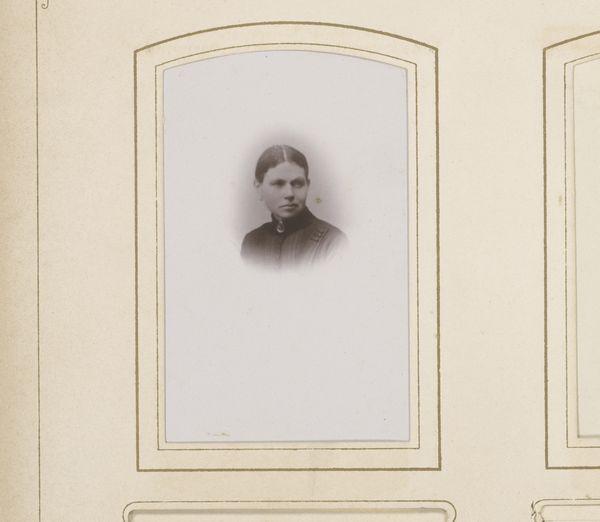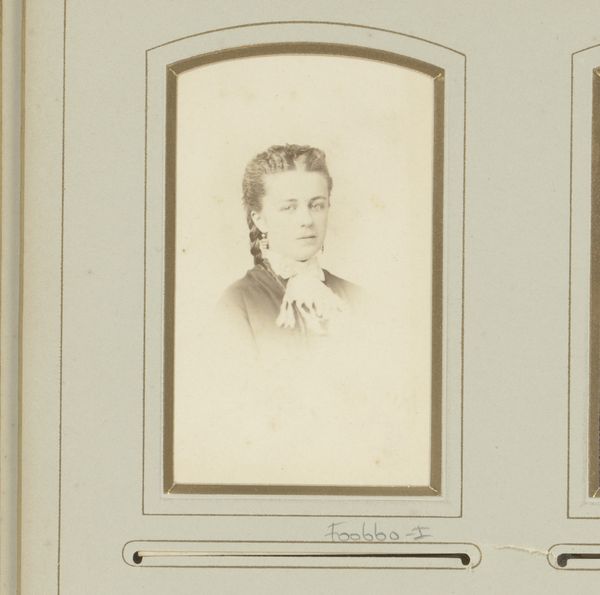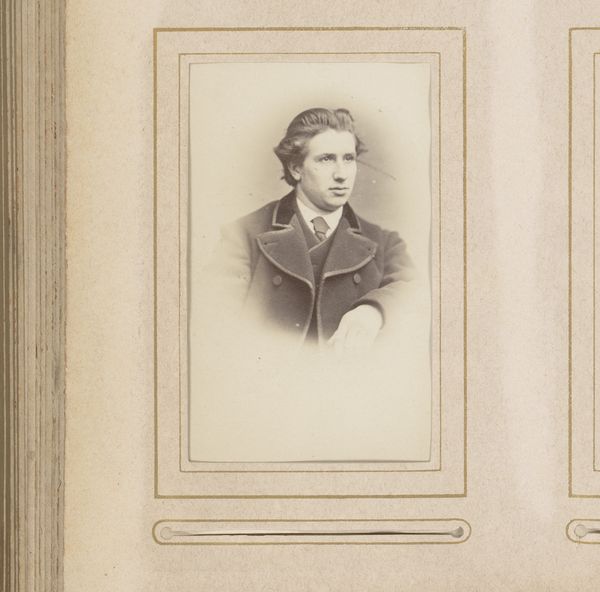
photography, albumen-print
#
portrait
#
photography
#
genre-painting
#
albumen-print
Dimensions: height 105 mm, width 63 mm
Copyright: Rijks Museum: Open Domain
Curator: Here we have "Portret van een vrouw," or "Portrait of a Woman," an albumen print dating from between 1870 and 1900. It is currently held here at the Rijksmuseum. What are your initial thoughts? Editor: It’s lovely, possessing an incredible, faded, melancholic stillness. The almost sepia tones add to that mood. There is so much subtle texture too. Curator: This photograph gives us a window into the rigid social structures and gender roles of the late 19th century. Consider the performative nature of portraiture at that time—how individuals consciously presented themselves. Editor: Absolutely. The subject's clothing, though, speaks volumes about production. The meticulously crafted lace collar, the probable use of multiple hands to create that necklace – these tell a tale of the textile industry and the labor involved. It’s not just about status but the system that made that status visible. Curator: Indeed. Albumen prints, like this one, became highly popular during the Victorian era. These prints made photography more accessible. The burgeoning middle class could participate in image production, shaping their personal and familial narratives. Editor: But let's think more practically for a moment. Albumen printing, as a process, would likely be expensive, using light and time as precious resources in making the photograph real. It renders time itself material. Curator: Interesting point. And we shouldn’t disregard the economic context that propelled this technology, influencing the demand for photographic portraiture. Think about the democratizing effect but within certain economic limits. Editor: Yes, accessibility remains stratified. While cheaper, these images aren’t necessarily classless. To me, what's fascinating is how they chose and used materials to create images that both replicated and subverted prevailing ideals. The choice of this medium says as much about the subject’s access as her self-perception. Curator: It all boils down to understanding art as a dialogue between the individual and larger cultural forces. Editor: Precisely. From the materials chosen to how it visually communicates, everything is tied into a web of labor and resources. A perfect snapshot into a world of consumption and display.
Comments
No comments
Be the first to comment and join the conversation on the ultimate creative platform.
